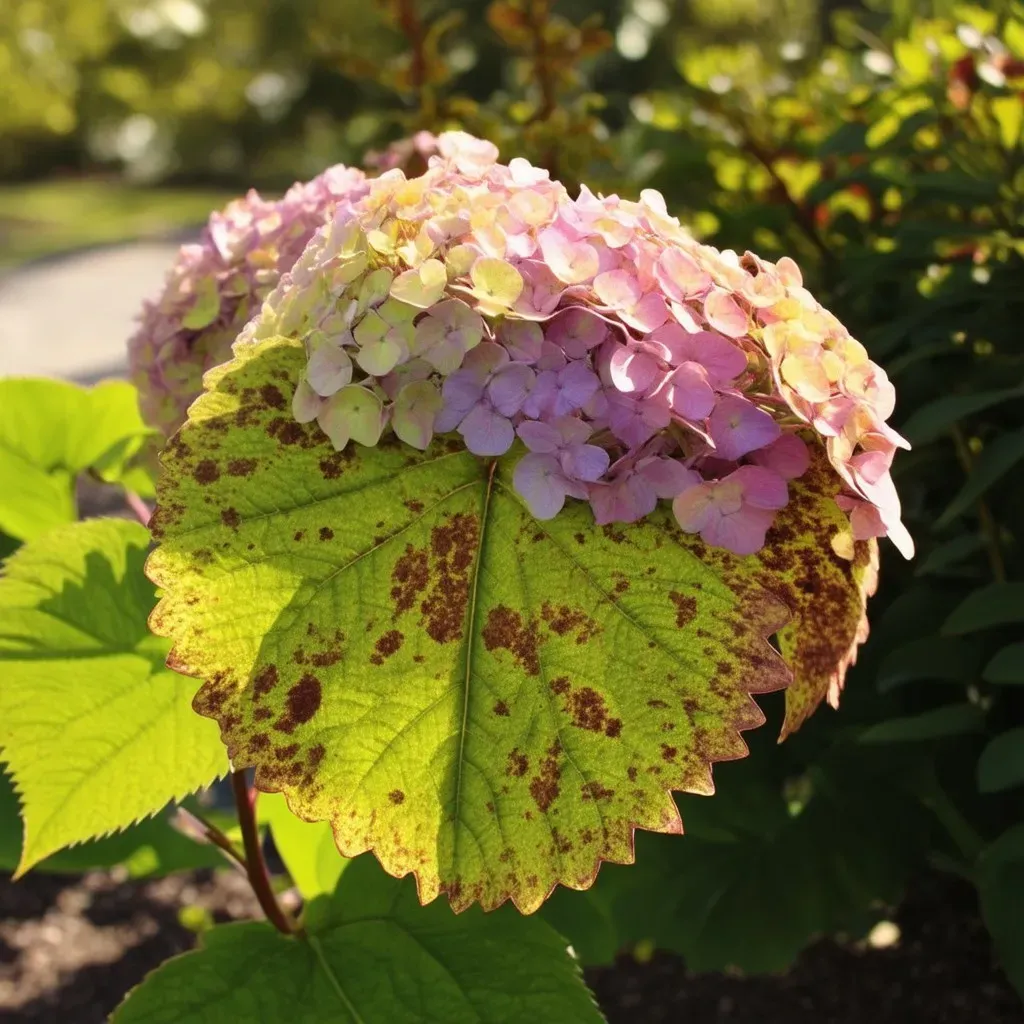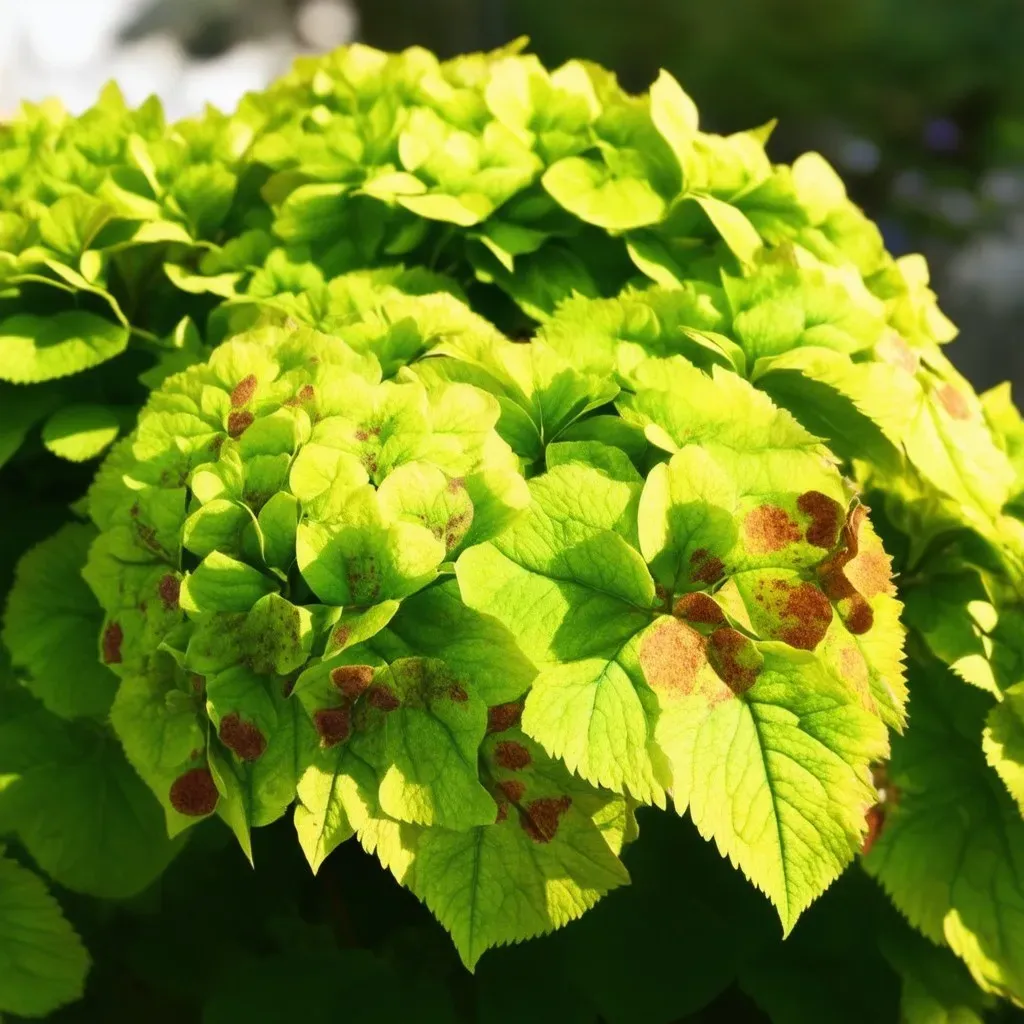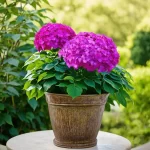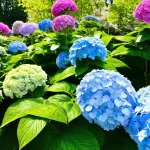Brown spots on hydrangea leaves can be a gardener’s worst nightmare. These unsightly blemishes can indicate a range of issues, from minor stressors to significant diseases. Understanding these spots is crucial for maintaining the health and beauty of your hydrangeas.
Understanding Brown Spots on Hydrangea Leaves
Brown spots on hydrangea leaves generally result from environmental stress, nutrient deficiencies, or pests. The common causes of these discolorations include:
- Fungal Infections: Diseases such as Cercospora leaf spot and Anthracnose are primary culprits behind brown spots on hydrangeas.
- Transplant Shock: A sudden change in the plant’s environment can result in spotting.
- Nutrient Deficiencies: Lack of essential nutrients in the soil can also manifest in the form of discolored leaves.
- Excessive Watering: Overwatering can lead to root rot, creating stress that appears as brown spots.
Common Fungal Diseases Affecting Hydrangeas
Fungal diseases like Cercospora and Anthracnose thrive in humid conditions and can be identified by distinct symptoms:
| Disease | Symptoms | Conditions for Growth |
|---|---|---|
| Cercospora Leaf Spot | Brown, circular spots on leaves | High humidity and poor air circulation |
| Anthracnose | Irregular brown blotches on leaves | Warm, damp weather |

According to the American Phytopathological Society, over 15% of hydrangea plant issues can be attributed to fungal diseases. These diseases begin small but can quickly spread if left untreated.
How to Identify and Treat Brown Spots
Identifying Other Leaf Problems
Apart from fungal infections, brown spots can also be caused by:
- Sunburn: If hydrangeas are placed in overly sunny spots without adequate water, leaves may scorch.
- Pest Infestations: Pests such as aphids or spider mites can sap the vitality of the plant leading to leaf problems.
- Nutrient Burn: Excessive fertilizer can lead to brown tips and spots on leaves.
Here’s a list of common symptoms indicating different types of issues:
| Symptom | Possible Cause |
|---|---|
| Brown edges on leaves | Sunburn / Nutrient Burn |
| Yellowing leaves with brown spots | Nutrient Deficiency / Overwatering |
| Black spots on leaves | Fungal Infection |
| White powdery spots | Powdery Mildew |
Prevention and Management
Effective management strategies for brown spots on hydrangea leaves include:
- Proper Watering: Ensure that hydrangeas receive adequate moisture but avoid waterlogging.
- Soil Health: Amend soil with compost to enhance nutrient availability.
- Fungicide Application: A suitable fungicide can effectively manage fungal infections if caught early.
For more detailed treatment strategies, consider resources like HappySprout.
FAQ
What Are the Most Common Pests of Hydrangeas?
Common pests that affect hydrangeas include:
- Aphids
- Spider Mites
- Japanese Beetles
How Can I Naturally Control Fungal Diseases?
Natural remedies include:
- Companion Planting: Certain plants can deter pests that spread fungal diseases.
- Neem Oil: A natural fungicide that is effective against many common issues.
What Is the Best Time to Prune Hydrangeas?
Pruning hydrangeas in late winter or early spring encourages healthy growth and can help mitigate diseases by providing better air circulation.
Summary of Treatment Measures
Below is a concise table summarizing treatments for brown spots on hydrangea leaves:
| Issue | Treatment |
|---|---|
| Fungal Infections | Apply fungicide as directed |
| Sunburn | Relocate plant to partial shade |
| Nutrient Deficiencies | Fertilize with balanced fertilizer |
| Transplant Shock | Maintain consistent watering |
| Pest Infestations | Use insecticidal soap or neem oil |

Conclusion
Monitoring the health of your hydrangeas can help you detect problems early. While brown spots on hydrangea leaves can signal various underlying issues, understanding the specific cause can empower you to treat and prevent these issues effectively, ensuring your hydrangeas remain vibrant and thriving.
Maintaining an annual care schedule can significantly improve the resilience of your hydrangeas, keeping them lush and beautiful throughout the growing season. Be proactive—because prevention is always better than cure when it comes to your beloved plants.
For further insights and help on hydrangea leaf problems, refer to HGTV‘s gardening tips here.



